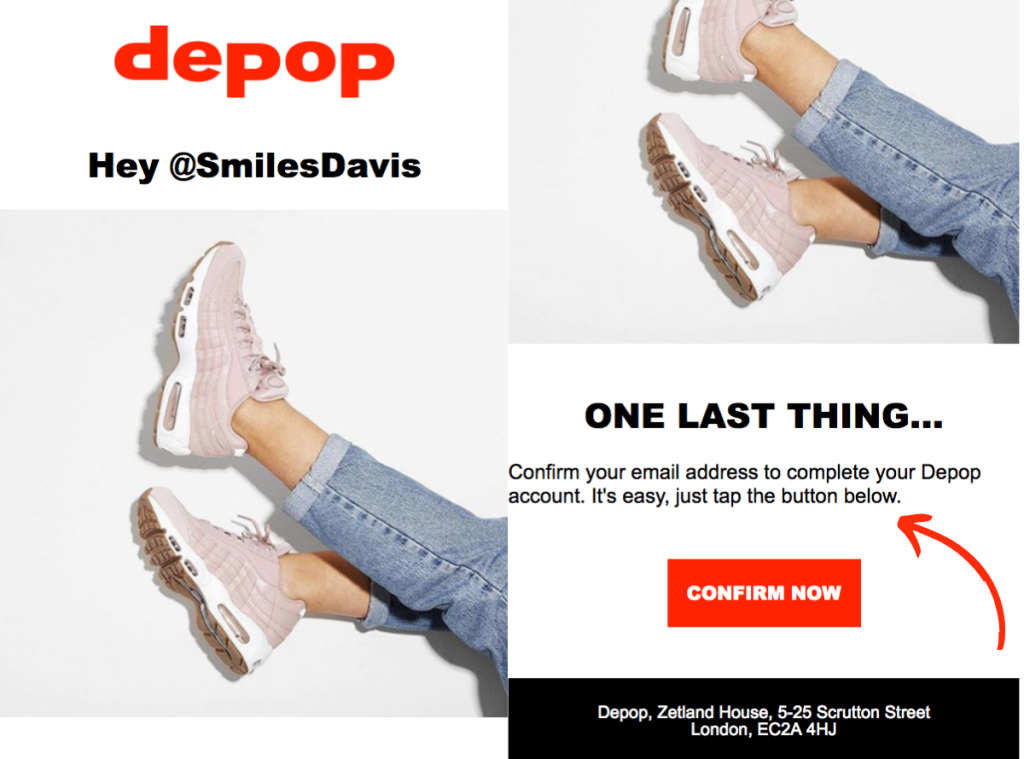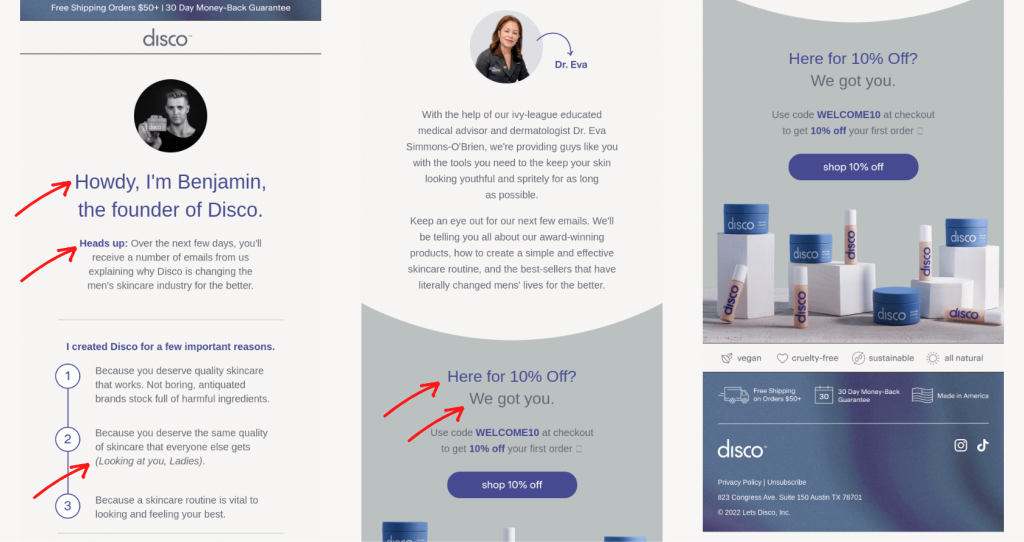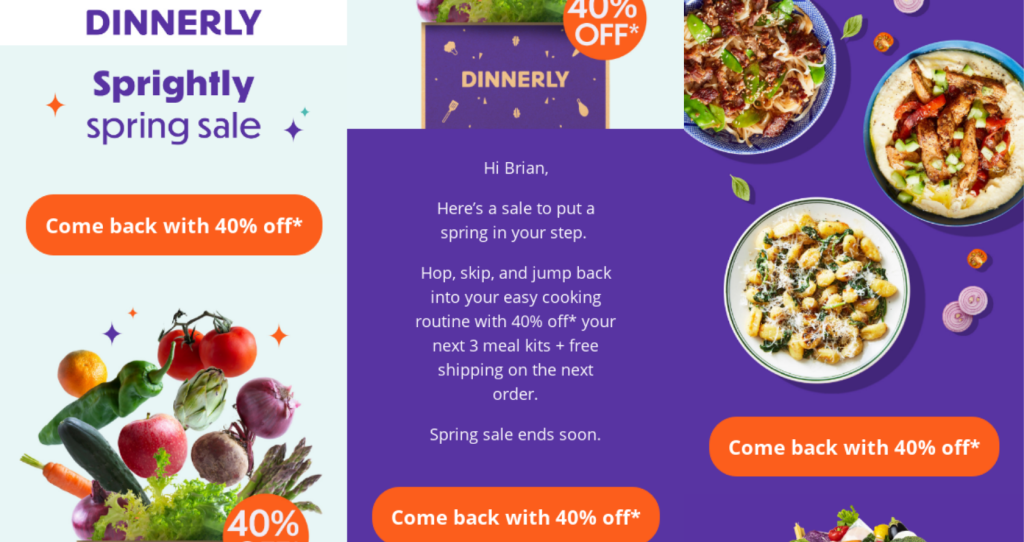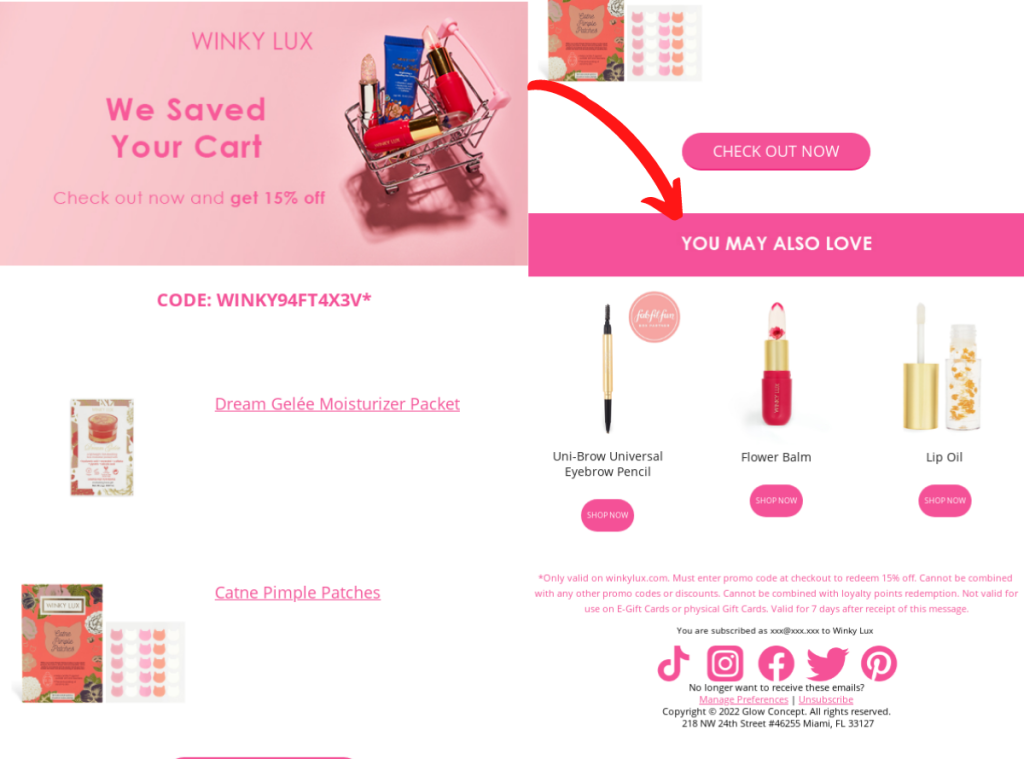What are the ways to interact with clients? Social media, email marketing, push notifications, and many more. Among this, email marketing is still one of the most profitable. Email marketing ROI varies from research to research. Usually, you may see it ranges from $36 to $42.
But what exactly is ROI? Return on investment, more commonly ROI, denotes the money you get from the campaign for every dollar spent. These costs cover paying for dedicated tools, conducting research, and providing your staff with the salary.
One thing is sure: email marketing ROI is promising. You can spend one dollar on email marketing and receive $42 back. But what if you’re far from these numbers and want to increase them?
This article will provide you with five tips to maximize your email marketing potential.
5 tips to boost your email campaign’s Return on Investment (RoI)
Every email marketer relies on numbers to analyze campaign performance. Some of them are:
- how many people receive and open a letter;
- come to the website by clicking on the attached link;
- convert when arriving on the page, and so on.
If your figures show that your campaign isn’t reaching its goals, look into ways to optimize the copy or improve website UX/UI and speed. What can low conversions and high bounce rates indicate?
For example, you need to speed up the website or configure user-friendly website navigation. So how can you make email marketing more cost-effective? Let’s outline five strategies to get more money from your email campaigns.
1. Improve deliverability
Email deliverability is the ability of a message to reach a customer. The letter should appear in the inbox, not in the promotional tab or the spam bin.
It’s the first metric to analyze send-out performance. Because if you overlook it, nothing else will work. Open rates, click-through rates, and conversions will come to a standstill as no one will get your messages. And failure to reach clients decreases email marketing ROI.
Why do only a small percentage of the people on the list receive your send-outs? It may happen if your emails often get marked as spam and go to another folder.
How can you prevent your messages from vanishing into the forgotten folder? Following email sending best practices is the correct answer.
Maintain your sender reputation. It involves:
- delivering emails regularly;
- having a verified email list;
- choosing a reputable provider;
- sending only relevant messages to reduce bounce rates.
One of the best things you could do is to have a real-time email verification system. Every time someone submits their email address to sign up for your newsletter, the API will instantly check and determine if the email address is valid. That way, only valid addresses enter your email list.
Besides, it’s a good idea to use a double opt-in process.
So what is double opt-in? It’s the process of asking your email subscribers to confirm whether they have subscribed to your newsletter. Check out the Depop image below. The subscriber needs to clicks on a button or a link in an email you send them in order confirm their subscription.
It ensures your messages will reach only the most interested prospects.

Finally, don’t remove the Unsubscribe option. If your subscribers want to unsubscribe but can’t find the option to do so, they’ll likely mark your email as spam. And that’d hurt your reputation. Besides, the Unsubscribe option is a legal requirement in many countries.
2. Adjust the tone of voice to resonate with the audience
The next step after analyzing deliverability is the open rate. The more people open your emails, the higher the chance of increasing email ROI is.
But how can you understand what will inspire subscribers to perform the desired action? That’s where you’ll need to look into email subject lines and the tone of voice of your copy.
A brand voice is a way to communicate with potential customers. It’s the first thing prospects hear or see, and it will determine whether they’ll be interested in buying the goods. The appropriate tone can evoke the needed emotions, encourage the audience to buy your products, and differentiate you from the competition.
How can you figure out the working tone of voice? What feelings should resonate with your customers? What demographic group do they represent?
Determine whom you address to and what their aspirations are, and then match it with your content. Your copy needs to be well-targeted. As the saying goes, if you sell everything to everyone, you will end up selling to no one.
Young and active prospects can respond better to slang, humor, and rich visual content. In contrast, an older audience with higher income may expect a more conservative approach.
Craft different email copies depending on your pricing and customer segments. Conduct A/B testing. If you strengthen bonds with customers, they’ll be more eager to purchase from you, increasing the email campaign ROI.
Below is an example of a newsletter from Disco™, a cosmetics manufacturer for men. They use an informal style of communication.
Notice how their onboarding message contains colloquial phrases, such as “howdy”, “heads up”, “we got you”. The author uses humor (“Looking at you, Ladies”) and incomplete sentences “here for 10% off?”, establishing a lighter atmosphere to engage young men.

3. Personalize send-outs to engage readers
Email personalization considers customer data to deliver what they will like the most. This strategy is tied to the previous tip to choose the appropriate tone of voice. But in this case, you take it to a broader scale and provide relevant copies that will coincide with the customer’s needs.
What can you personalize in a message? The starting point is using names in subject lines. You can enhance personalization by showing the most relevant content in the letter. You can use purchase history or previous actions to suggest stuff that’s more in line with their individual preferences.
Another case in point is customer preferences. Do prospects expect you to entertain or educate them? Educational content may work better for some customers. Others will appreciate detailed reviews and social proof. Your task is to define what brings more conversions and find similar patterns in the client’s behavior.
Personalization goes hand in hand with growing your ROI and revenue. It boosts open and click-through rates by 26%. And according to various sources, personalized messages generate 5.7 times more revenue.
Keep your copies more personal by providing your name, title, photo, and company name. This information will help you show prospects that they are dealing with an actual human, not a bot or system.
Where can you obtain data on prospects’ needs? Employ Google Analytics to track your crucial KPIs, including:
- website visitors;
- what they purchase;
- the time spent on what pages;
- the number of conversions.

4. Optimize emails for mobiles to boost conversions
Smartphones replace computers for people wishing to access websites, check their inboxes, and explore goods on the go. Various reports state that 50% to 70% of people open emails from mobile devices. With the rapid growth of mobile shopping, mobile responsiveness is key.
Unoptimized, sluggish send-outs spoil the user experience. Let alone, they will harm the ROI of your email campaign.
How does a mobile-friendly message differ from the one created for desktops? Here are its distinguishing features:
- shorter subject lines. Mobile devices allow for 25-30 characters of subject lines compared to 60 characters for a desktop version. Using all 60 characters may hide crucial information on a mobile. That’d reduce the chance of opening the message;
- scannable and concise copy with bulleted lists, short paragraphs, etc. As mobile devices are all about fast access to information, keep content to-the-point;
- compressed images for speedier loading or don’t include them at all. Pictures should support the text, but consider them optional as some mobiles don’t display visuals by default;
- a call-to-action, that stands out State what you want subscribers to do up front by placing a CTA near the top of your message.
- leaving enough space around links and CTAs. That’s because mobile users may erroneously click other buttons if they are arranged too close.
Test emails across various devices. Check them from your customers’ eyes and optimize content. Make it look more pleasing, aim to convert more viewers into buyers, and increase the email ROI.
Here’s how Dinnerly implements mobile optimization best practices. Do you see the short message with the personalized address? CTAs convey the information clearly and are big enough to tap with a thumb.

5. Automate send-outs to focus on creative tasks
It’s hard to track every customer’s activity on the website and send letters when they subscribe, buy something, or add to their cart. That’s where you can benefit from email automation. This strategy is especially beneficial for B2C eCommerce businesses with numerous customers.
Email automation is another way to increase the ROI of your email campaign. It’s about setting up the system to send messages without human intervention triggered by some action or time.
Instead, merchants employ email marketing services such as MailChimp. They receive signals from website activities and forward relevant messages to subscribers.
Suppose someone creates an account or subscribes to a newsletter. Configure welcome emails to onboard prospects, tell about your business, and set the tone for future communication.
The aim is to deliver the right messages to particular audiences at the right time, so you don’t have to do it manually. You can send more complex automated messages with personalized content based on client data and behavior.
For example, offer goods based on what buyers usually purchase. Look at the Winky Lux realization of this strategy. The store incorporates the “You may also love” section with a tailored selection of goods.

To sum up
All marketers strive to fine-tune their campaigns in order to bring maximum revenue. But to gain a high ROI, you need to optimize your strategies so that they appeal to recipients.
However, customer needs and requirements keep changing and evolving. What worked two years ago will hardly add to the ROI today. Now all efforts are aimed at meeting customers’ needs.
Are you planning for any changes to email marketing? Give your strategies a fresh look. Follow the recent trends, such as automation, personalization, and segmentation. At the same time, don’t lose the human touch and reach out to your subscribers with an appropriate tone of voice.
This article introduced you to several email marketing tactics. They will help you increase website traffic, conversion rates, and ROI. Keep testing your copies. Utilize modern automation tools to reduce human labor. Learn from your experiments. These steps will improve your email marketing and the business itself.

